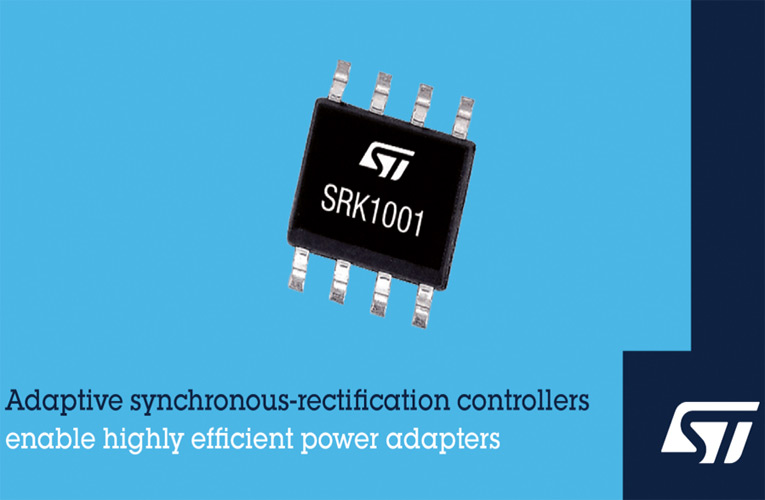
STMicroelectronics has introduced the SRK1001 secondary-side synchronous rectification controller that is available with adaptive features that cut bill-of-materials costs, minimize circuit size, and simplify the design of power adapters, chargers, USB Power Delivery outlets, and lighting power supplies based on flyback topologies. The controller has been designed for fast turn-on with minimum delay, the innovative adaptive turn-off logic of the device minimizes synchronous-rectification MOSFET conduction time for optimum efficiency with minimal switching losses.
The SRK1001 automatically enters the low consumption mode when the MOSFET conduction period reaches the programmed minimum on time or when the burst-mode operation of the primary controller is detected. The device Ensures superior converter efficiency at light loads with a quiescent current of just 160µA.
SRK1001 is suitable for application with output voltage up to 24V, and capable of maintaining regulation down to 2V output in CCM. With a wide supply voltage range of 4.5V to 32V the output of the device can sink up to 1A and source up to 0.6A to control the gate of the external N-channel synchronous-rectification MOSFET. The drain voltage sensing input of the device is capable of monitoring the external MOSFET drain-source voltage up to 185V.
The versatility of the SRK1001 allows it to be used in quasi-resonant (QR) converters and mixed continuous/discontinuous current mode (CCM/DCM) fixed-frequency operation at up to 300kHz. The noise from inducing spurious behavior is prevented by programmable blanking time after both turn-on and turn off to ensure the robustness. The synchronous MOSFET can be turned off with the dedicated Disable/Synchronization pin, the same pin can also be used to remotely trigger low-consumption mode, or to synchronize MOSFET turn-off during CCM operation. The SRK1001 is in production now, packaged as an 8-pin SO8 device, from $0.33 for orders of 1000 pieces. For more information, check the datasheet of SRK1001 synchronous converter IC.

